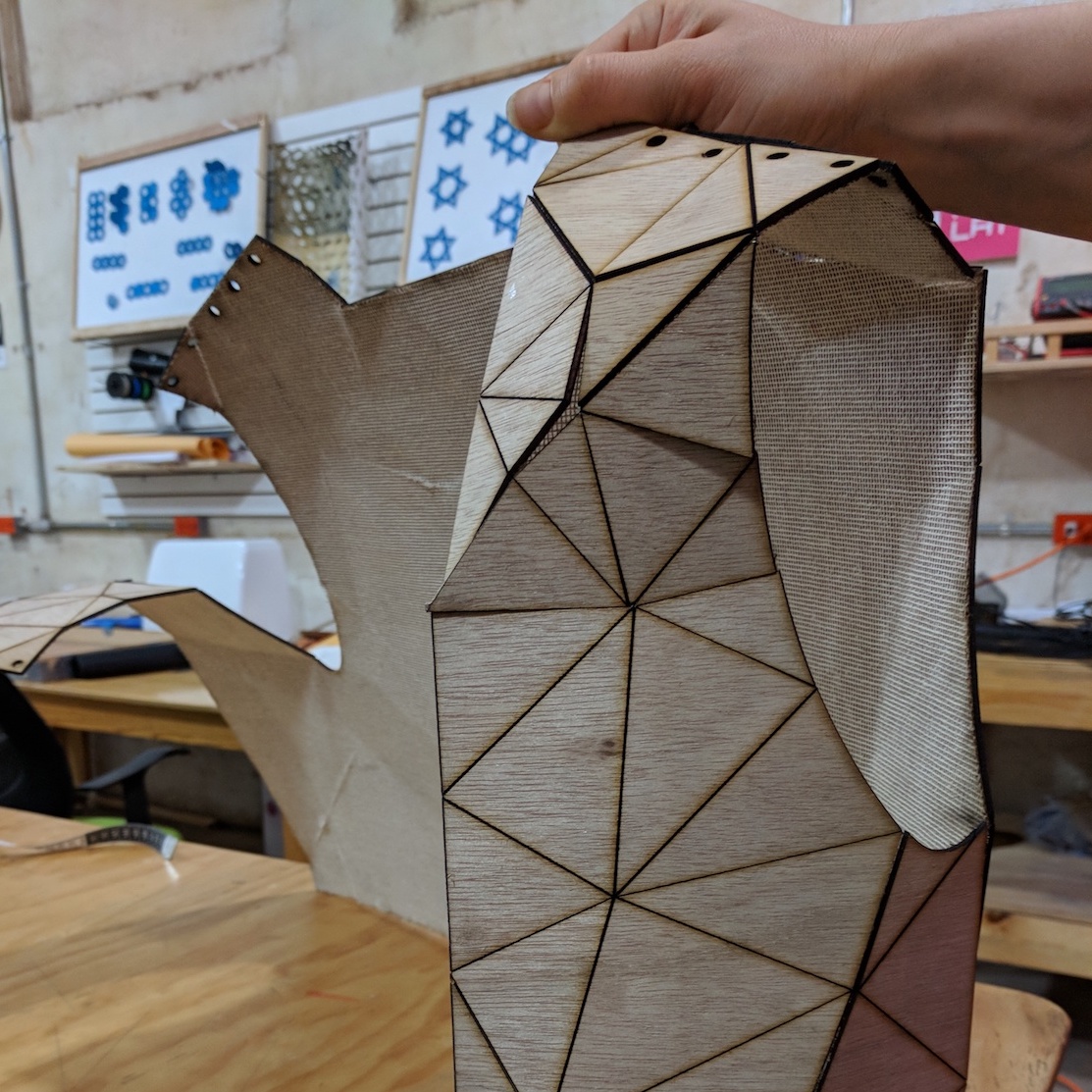FABRICADEMY // YUCATAN
Fabricademy is a transdisciplinary course that focuses on the development of new technologies applied in the textile industry, in its broad range of applications, from the fashion industry and the upcoming wearable market. Part of the Academy of almost Anything, it's the first ever edition, taking place among a network of Fablabs all around the worlds. An incredible opportunity to get hands on-knowledge and at the same time to create a network of amazing talents worldwide :)
Image source: Fabricademy Week 1 Presentation (screenshot)
WEEK 1 / Getting started
Gettin' strated with Fabricademy, the course objectives, content & structure, and to the amazing faculty that will guide us through this journey. Facilitated by Anastasia Pistofidiou, Cecilia Raspanti and Fiore Basile, it was an exciting introduction to the upcoming months..
The mannequin, without its skin
WEEK 2 / DIGITAL BODIES
This class, given by Anastasia Pistofidiou, introduced the concept of the representation of the human body in art, science and fashion design. We were informed about new digital tools that complement hand tools in order to design, represent, make and modify the human figure to create a canvas for wearable creations, a digitally fabricated mannequin.
Triangular seamless pattern
WEEK 3 / CIRCULAR O.C. FASHION
This class, given by Zoe Romano, outlined the systems behind fashion and the textile industry, focusing on alternative systems such as circular fashion, agile fashion, open value chains. We learned how to make modular elements, structures and connections that allow the user to change the shape of a garment, resize it or replace certain elements.
WEEK 4 / BIO DYES & BIO FABRICS
This class, given by Cecilia Raspanti, focused on exploring material and coloring alternatives to the current toxic ones applied by the textile industry. We learned about natural dyes, using pigments and bacteria, material bio fabrication, with a zoom into local recipes of DIY materials and dyes.
WEEK 5 / E-TEXTILES & WEARABLES I
In this class, Hannah Perner-Wilson and Mika Satomi from KOBAKANT gave us an overview of the field of electronic textiles, with example works, materials and technical developments that made these projects possible.
We will also introduce idea of microcontrollers using ATTINY as an example.
WEEK 6 / COMPUTATIONAL COUTURE
In this class, we explored computational design methods towards a new reinterpretation of garments and accessories for fashion design, inspired by a new digital design methodology. In detail, we went through the basics of Grasshopper, a parametric design plugin for Rhino.
WEEK 7 /TEXTILE AS SCAFFOLD
In this class we will use textiles for composites, polymerisation, solidification, fabric formwork, crystallization, composites and biocomposites, agglomerates.. This class focuses on exploring techniques and applications of technical textiles in the industry. It introduces the concept of designing custom processes that require the design of a set of tools, processes and workflow.
WEEK 8 / OPEN SOURCE HARDWARE
The class explores the open source hardware field in general and focuses on its potential in the area of textile. We got an overview on the evolution of these tools and how these impact production and manufacturing, with a focus on hacking, both machines and tools, and creating open source accessible machinery for a broader public.
WEEK 9 / E-TEXTILES & WEARABLES II
This second class on the topic of wearables and e-textiles gave us a more advanced coverage on soft sensors and actuators and programming interactions, focusing on incorporating computation into soft circuits by using microcontrollers and single-board computers. It was given by Becky Steward.
WEEK 10 / IMPLI & APPLICATIONS
This class, given by Oscar Tomico, illustrated the challenges and the space of opportunities emerging where (wearable) tech meets (fashion) design. We got an overview of recent developments in electronics, software programming and service design shaking the current notions of what a textile is. Societal trends like a renewed interest in crafts, the need for a sustainable mass production system and the emergence of personalization are reshaping the way the fashion system works.
WEEK 11 / SOFT ROBOTICS
This class, given by Lily Chambers, focused on the study of a specific field in robotics, the soft robotics. Soft bodied robots have similarities and performance characteristics similar to living organisms or the human body. Soft-robotics are based in Bio-inspired design or biomimicry and have applications in wearables, rehabilitation prosthetics, surgical robots, rescuing and others. We focused on the fabrication of soft actuators, sensors and grippers using novel materials, artificial muscles and performative locomotion design.
WEEK 12 / SKIN ELECTRONICS
In this class, given by Katie Vega, we learned about skin electronics, where new partnerships between the biotech/tech companies and skin professionals such as makeup artists, prosthesis experts and tattooists are forming in order to embrace the idea of human-device symbiosis. FX e-makeup made use of special effects makeup for hiding electronic components that sense facial muscle movements, acting as a second skin.












